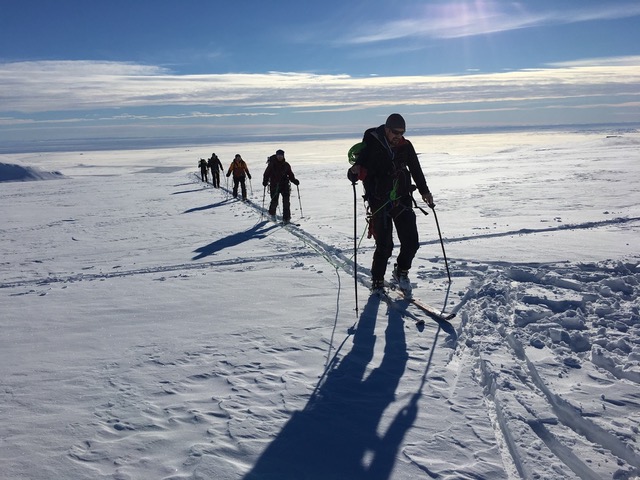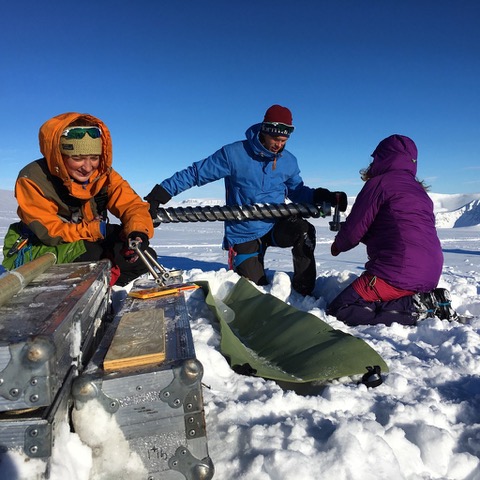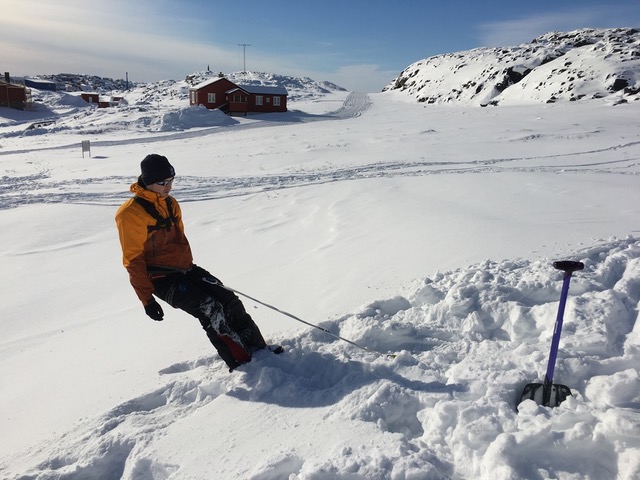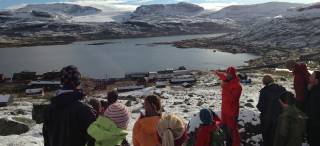
Before Easter 15 phd-students from 10 different nationalities participated in an Arctic field course organized by the CHESS research school. The course was held at the Danish arctic research station on Disko Island, located on the west coast of Greenland. During winter the fjord is covered in sea ice so the only way to and from and the island was by helicopter from Ilulissat.
After a magnificent flight with great views of Jakobshavn Glacier, icebergs and sea ice, the students were ready to start their own field work.

Principal lecturers Kerim Nisancioglu (University of Bergen), Fiamma Straneo (Scripps Institute for Oceanography), Anne-Katrine Faber (University of Bergen) and Andreas Vieli (University of Zurich) gave introductory presentations about various topics such as ice-coring techniques and analysis, snow properties and isotope analysis, sea ice and ocean-glacier interaction, and ice-flow modelling.

After a full day of glacier safety training by Silje Smith-Johnsen, where students learned skiing in rope-teams and crevasse rescue, different groups started their own projects. Some groups ventured out on the sea ice to do CTD measurements, and to study sea ice growth and lead formation. Other groups skied and snowmobiled up to Lyngmarksbreen glacier to take snow samples, dig snow-pits and drill ice-cores. During this unique course, they did not only learn to plan and execute different types of fieldwork, but they also got an insight on the changing climate system on Greenland.
Although weather was generally good with lots of sun, the students really experienced the harsh climate of Greenland when they were outside in temperatures colder than -25 on ski-trips often around 6-7 hours. A good lesson on how challenging it can be to collect data in the cold Arctic, and definitely a though and extreme, but great experience.
Check out the instagram tag #icedisko for more impressions from the course





